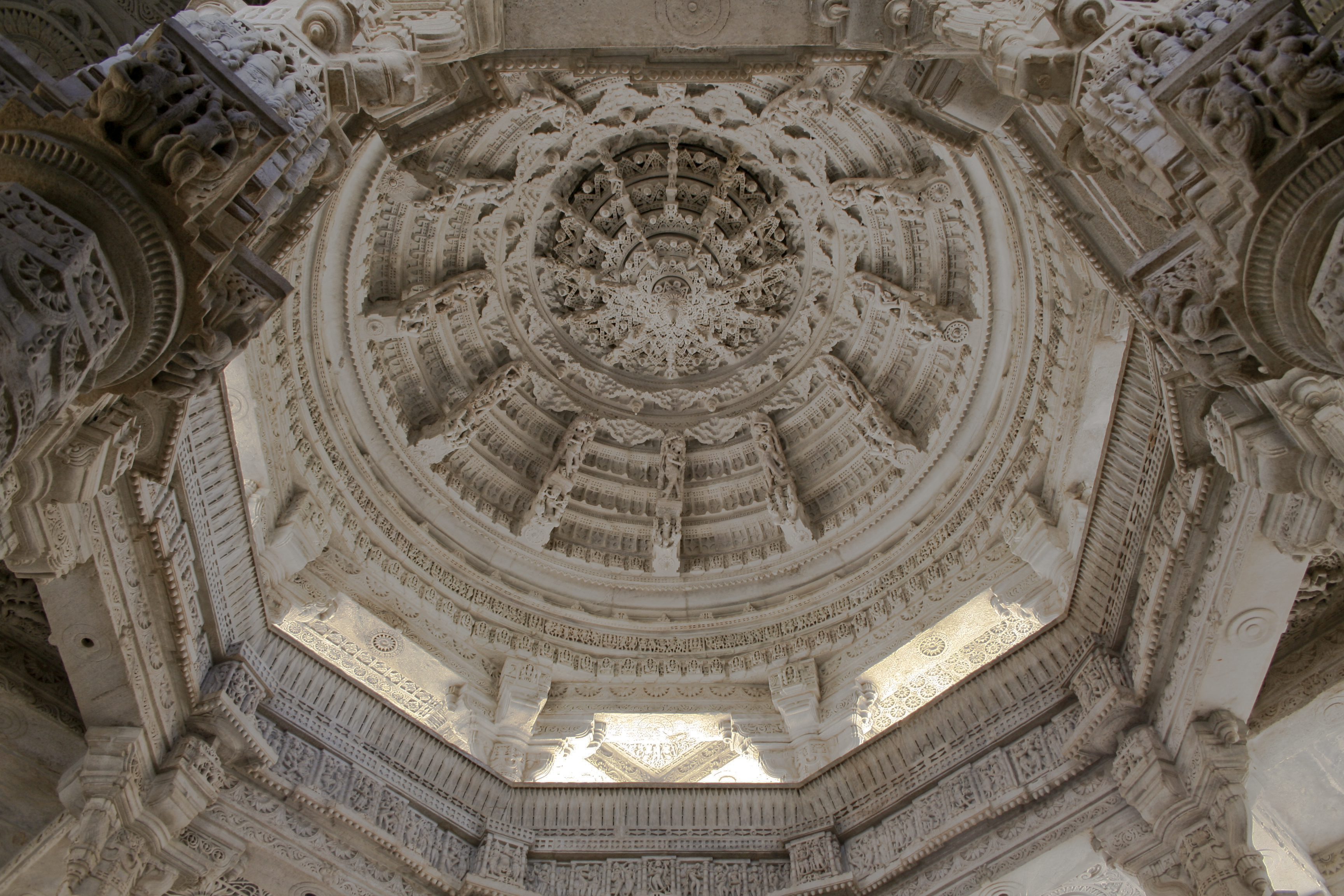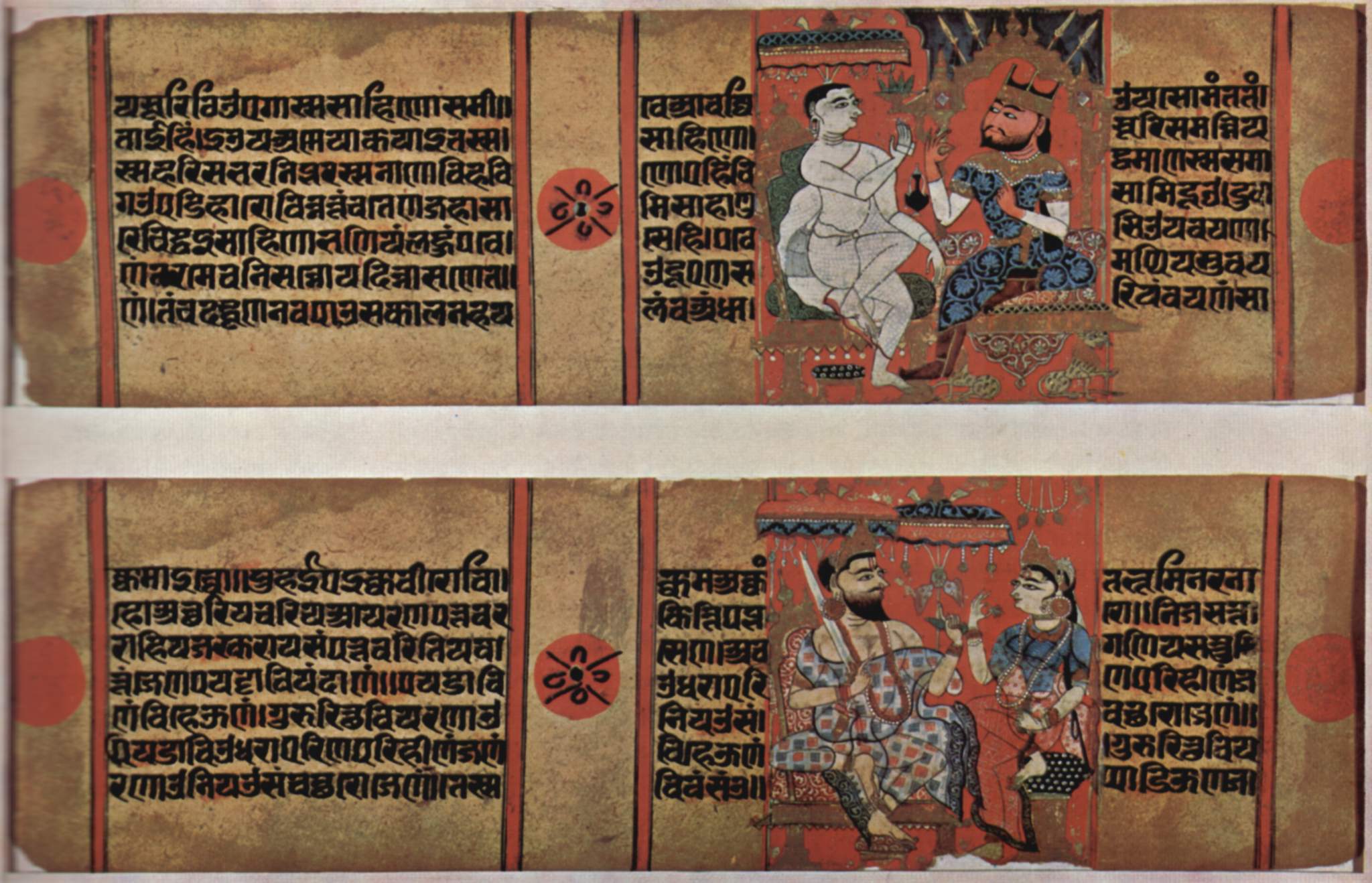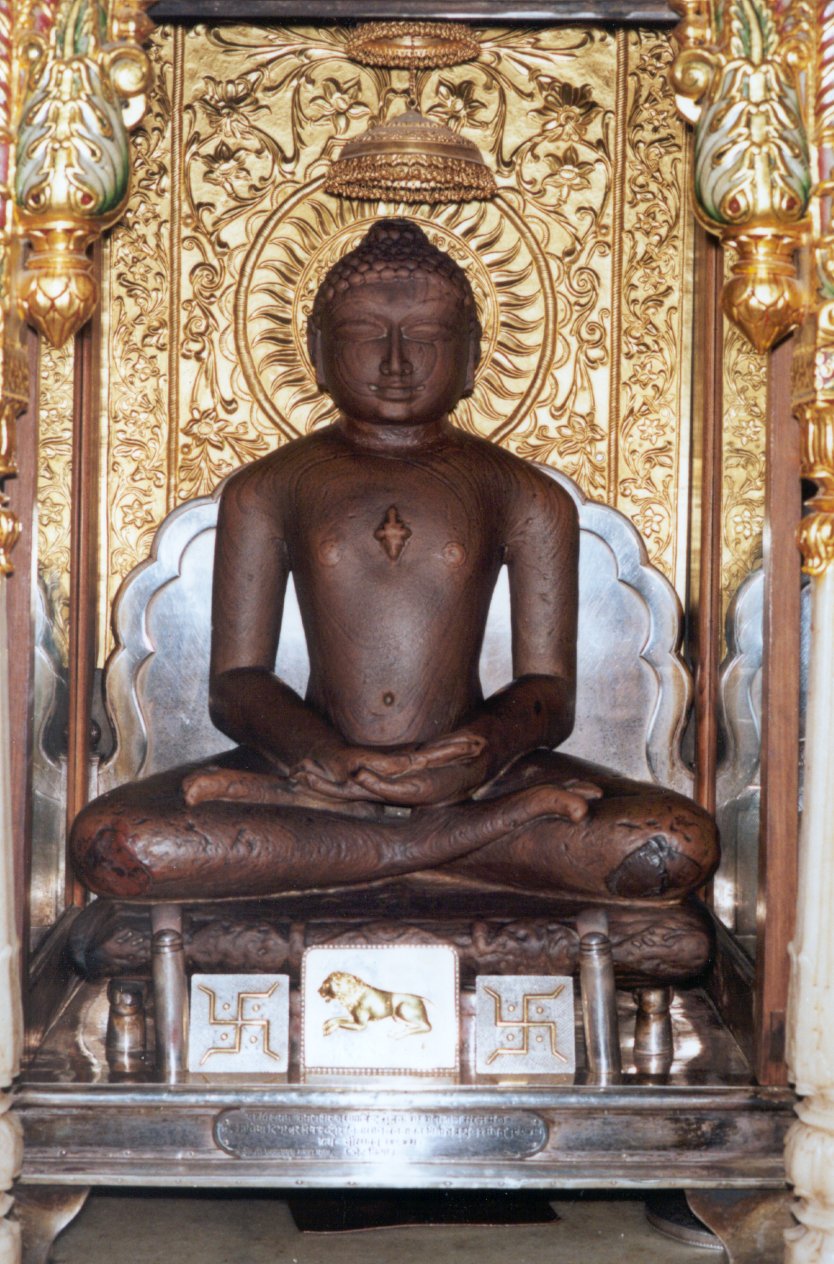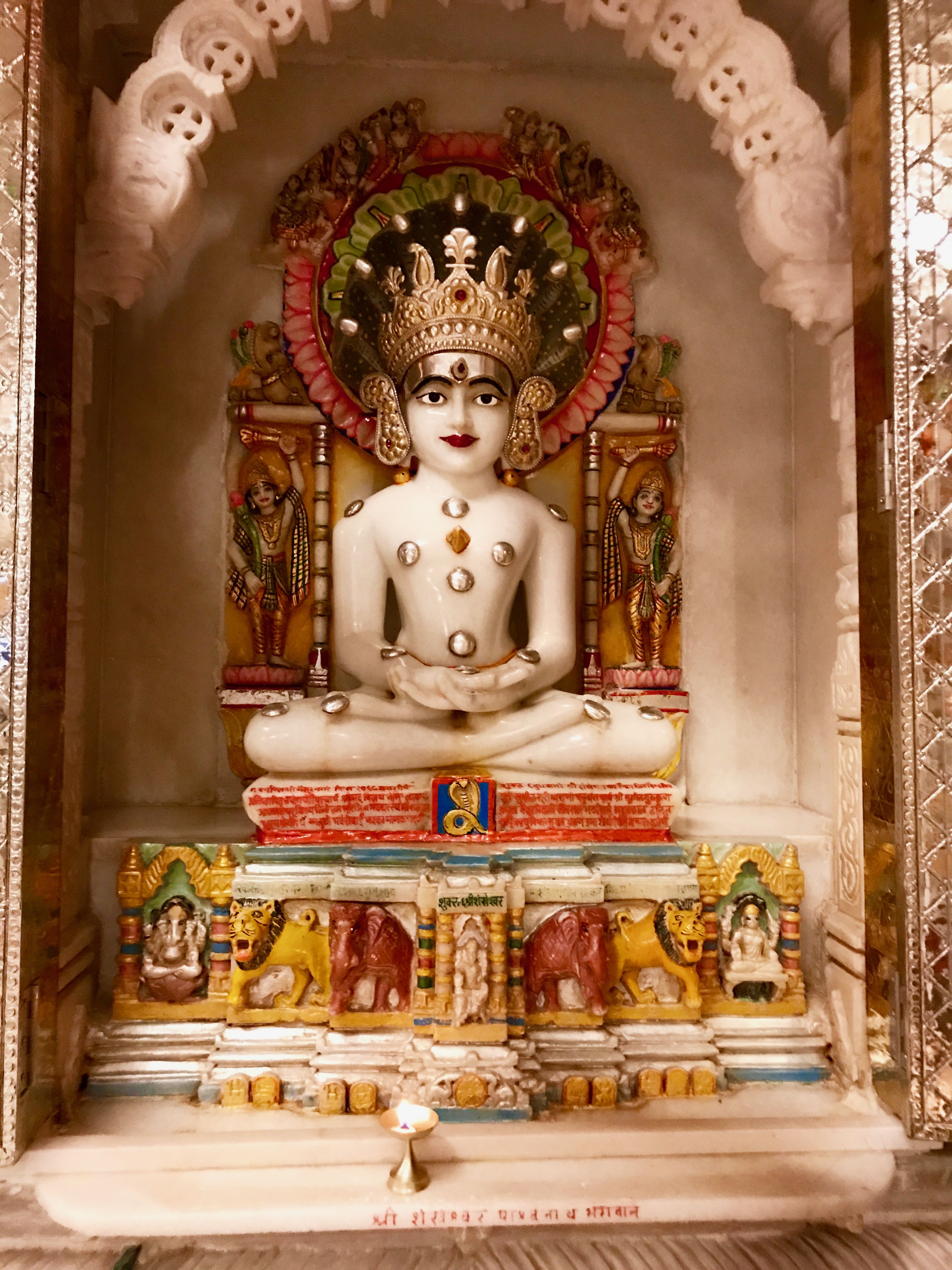|
Rajgadhi Timbo
The Rajgadhi Timbo is a mound and historical site of medieval Jain temple located in Umta village in Visnagar Taluka, Mehsana district, Gujarat, India. The site is State Protected Monument under Gujarat State Archeology Department (GSAD). History The site of Rajgadhi Timbo was 50 feet high and spread in an area of 3000 square metre surrounded by village. The place was a site of massive Jain temple. It was possibly attacked by Alauddin Khalji's generals Ulugh Khan and Nusrat Khan during the 1299 invasion of Gujarat. After the first attack in which the upper portion of temple was destroyed, the lower portion was buried in layers of lime under mound to protect it from invaders. After 250 years, Darbar Ummatsinh Rana said to have built the Rajgadhi (royal house) on the mound. In 1726, the Rajgadhi was destroyed in fire when the Marathas led by Kuntaji Bande burned down the village. In 1890, Sayajirao Gaekwad of Baroda State built a school on the mound. In 1985, the back portion of ... [...More Info...] [...Related Items...] OR: [Wikipedia] [Google] [Baidu] |
Māru-Gurjara Architecture
Māru-Gurjara architecture or Solaṅkī style, is the style of West Indian temple architecture that originated in Gujarat and Rajasthan from the 11th to 13th centuries, under the Chaulukya dynasty (also called Solaṅkī dynasty). Although originating as a regional style in Hindu temple architecture, it became especially popular in Jain temples, and mainly under Jain patronage later spread across India, then later to diaspora communities around the world. On the exteriors, the style of Māru-Gurjara architecture is distinguished from other North Indian temple styles of the period in "that the external walls of the temples have been structured by increasing numbers of projections and recesses, accommodating sharply carved statues in niches. These are normally positioned in superimposed registers, above the lower bands of moldings. The latter display continuous lines of horse riders, elephants, and kīrttimukhas. Hardly any segment of the surface is left unadorned." The main s ... [...More Info...] [...Related Items...] OR: [Wikipedia] [Google] [Baidu] |
Sayajirao Gaekwad
Sayajirao Gaekwad III (born as Shrimant Gopalrao Gaekwad; 11 March 1863 – 6 February 1939) was the Maharaja of Baroda State from 1875 to 1939, and is remembered for reforming much of his state during his rule. He belonged to the royal Gaekwad dynasty of the Marathas which ruled parts of present-day Gujarat. Early life Sayajirao was born into a Maratha family in the village of Kavlana in Malegaon taluka of Nashik district, as Gopalrao Gaekwad, second son of Kashirao Bhikajirao (Dada Sahib) Gaekwad (1832–1877) and Ummabai. He belonged to a cadet branch of the Gaekwad dynasty, descended from a morganatic marriage of the first Raja of Baroda, and so was not expected to succeed to the throne. Matters of succession Following the death of Sir Khanderao Gaekwad, the popular Maharaja of Baroda, in 1870, it was expected that his brother, Malharrao, would succeed him. However, Malharrao had already proven himself to be of the vilest character and had been earlier imprisoned ... [...More Info...] [...Related Items...] OR: [Wikipedia] [Google] [Baidu] |
Destroyed Temples
Destroyed may refer to: * ''Destroyed'' (Sloppy Seconds album), a 1989 album by Sloppy Seconds * ''Destroyed'' (Moby album), a 2011 album by Moby See also * Destruction (other) Destruction may refer to: Concepts * Destruktion, a term from the philosophy of Martin Heidegger * Destructive narcissism, a pathological form of narcissism * Self-destructive behaviour, a widely used phrase that ''conceptualises'' certain kin ... * Ruined (other) * {{disambiguation ... [...More Info...] [...Related Items...] OR: [Wikipedia] [Google] [Baidu] |
Archaeological Sites In Gujarat
Archaeology or archeology is the study of human activity through the recovery and analysis of material culture. The archaeological record consists of artifacts, architecture, biofacts or ecofacts, sites, and cultural landscapes. Archaeology can be considered both a social science and a branch of the humanities. It is usually considered an independent academic discipline, but may also be classified as part of anthropology (in North America – the four-field approach), history or geography. The discipline involves surveying, excavation, and eventually analysis of data collected, to learn more about the past. In broad scope, archaeology relies on cross-disciplinary research. Archaeologists study human prehistory and history, from the development of the first stone tools at Lomekwi in East Africa 3.3 million years ago up until recent decades. Archaeology is distinct from palaeontology, which is the study of fossil remains. Archaeology is particularly important for learn ... [...More Info...] [...Related Items...] OR: [Wikipedia] [Google] [Baidu] |
Vikram Samvat
Vikram Samvat (ISO: ''Vikrama Saṁvata''; abbreviated VS), also known as the Vikrami calendar is a Hindu calendar historically used in the Indian subcontinent and still also used in several Indian states and Nepal. It is a lunisolar calendar, using twelve to thirteen lunar months each solar sidereal years. The year count of the Vikram Samvat calendar is usually 57 years ahead of the Gregorian calendar, except during January to April, when it is ahead by 56 years. Vikram Samvat is an official calendar of Nepal. And unlike India where it is used only for religious dates, the solar version of Vikram Samvat is an official calendar used for everything from school sessions to legal contracts to any official functions. History A number of ancient and medieval inscriptions used the Vikram Samvat. Although it was reportedly named after the legendary king Vikramaditya, the term "Vikrama Samvat" does not appear in the historical record before the 9th century; the same calendar sy ... [...More Info...] [...Related Items...] OR: [Wikipedia] [Google] [Baidu] |
Digambara
''Digambara'' (; "sky-clad") is one of the two major Jain schools and branches, schools of Jainism, the other being ''Śvetāmbara'' (white-clad). The Sanskrit word ''Digambara'' means "sky-clad", referring to their traditional monastic practice of neither possessing nor wearing any clothes. Nakedness was the ideal practice of lord Mahavira and his immediate followers. Mahavira emphasized the importance of nakedness for monks. It symbolizes complete detachment and is an ideal form of conduct. Mahavira believed that renouncing clothes made the body immune to external influences like heat and cold, increasing resilience. Without clothes, a monk would avoid the distractions of acquiring, maintaining, and washing garments, allowing him to focus on spiritual growth and self-discipline. Digambara and Śvetāmbara traditions have had historical differences ranging from their dress code, their temples and iconography, attitude towards female monastics, their legends, and the texts the ... [...More Info...] [...Related Items...] OR: [Wikipedia] [Google] [Baidu] |
Śvetāmbara
The Śvetāmbara (; also spelled Shwetambara, Shvetambara, Svetambara or Swetambara) is one of the two main branches of Jainism, the other being the Digambara. ''Śvetāmbara'' in Sanskrit means "white-clad", and refers to its ascetics' practice of wearing white clothes, which sets it apart from the ''Digambara'' or "sky-clad" Jains whose ascetic practitioners go nude. Śvetāmbaras do not believe that ascetics must practice nudity. The Śvetāmbara and Digambara traditions have had historical differences ranging from their dress code, their temples and iconography, attitude towards Jain nuns, their legends and the texts they consider as important. Śvetāmbara Jain communities are currently found mainly in Gujarat, Rajasthan and coastal regions of Maharashtra. According to Jeffery D. Long, a scholar of Hindu and Jain studies, about four-fifths of all Jains in India are Śvetāmbaras. History and lineage Śvetāmbaras consider themselves to be the original followers of Maha ... [...More Info...] [...Related Items...] OR: [Wikipedia] [Google] [Baidu] |
Archaeological Survey Of India
The Archaeological Survey of India (ASI) is an Indian government agency that is responsible for archaeological research and the conservation and preservation of cultural historical monuments in the country. It was founded in 1861 by Alexander Cunningham during the British Raj who also became its first Director-General. History ASI was founded in 1861 by Alexander Cunningham who also became its first Director-General. The first systematic research into the subcontinent's history was conducted by the Asiatic Society, which was founded by the British Indologist Sir William Jones on 15 January 1784. Based in Calcutta, the society promoted the study of ancient Persian texts and published an annual journal titled ''Asiatic Researches''. Notable among its early members was Charles Wilkins who published the first English translation of the ''Bhagavad Gita'' in 1785 with the patronage of the then Governor-General of Bengal, Warren Hastings. Jones initiative resulted in the publica ... [...More Info...] [...Related Items...] OR: [Wikipedia] [Google] [Baidu] |
Baroda State
Baroda State was a kingdom within the Maratha Confederacy and later a princely state in present-day Gujarat. It was ruled by the Gaekwad dynasty from its formation in 1721 until its accession to the newly formed Dominion of India. With the city of Baroda ( Vadodara) as its capital, its relations with the British Raj authorities were managed by the Baroda Residency. The revenue of the state in 1901 was Rs. 13,661,000. Baroda merged into the Dominion of India on 1 May 1949, before which an interim government was formed in the state. History Early history Baroda derives its native name ''Vadodara'' from the Sanskrit word ''vatodara'', meaning 'in the heart of the Banyan (''Vata'') tree. It also has another name, ''Virakshetra'' or ''Virawati'' (land of warriors), mentioned alongside ''Vadodara'' by the 17th century Gujarati poet Premanand Bhatt, native to the city. Its name has been mentioned as ''Brodera'' by early English travellers and merchants, from which its ... [...More Info...] [...Related Items...] OR: [Wikipedia] [Google] [Baidu] |
Maratha Empire
The Maratha Empire, also referred to as the Maratha Confederacy, was an early modern India, early modern polity in the Indian subcontinent. It comprised the realms of the Peshwa and four major independent List of Maratha dynasties and states, Maratha states under the nominal leadership of the former. The Marathas were a Marathi language, Marathi-speaking peasantry group from the western Deccan Plateau (present-day Maharashtra) that rose to prominence under leadership of Shivaji (17th century), who revolted against the Bijapur Sultanate and the Mughal Empire for establishing "Hindavi Swarajya" (). The religious attitude of Aurangzeb, Emperor Aurangzeb estranged Kafir, non-Muslims, and the Deccan wars, Maratha insurgency came at a great cost for his men and treasury. The Maratha government also included warriors, administrators, and other nobles from other Marathi people, Marathi groups. Shivaji's monarchy, referred to as the Maratha Kingdom, expanded into a large realm in the 18th ... [...More Info...] [...Related Items...] OR: [Wikipedia] [Google] [Baidu] |
Mehsana District
Mehsana district (alternate spelling "Mahesana") is one of the 33 districts of Gujarat state in western India. Mehsana city is the administrative headquarters of this district. The district has a population of over 1.8 million and an area of over 4,500 km2. There are over 600 villages in this district with a population of 2,035,064 of which 22.40% were urban as of 2011. Mehsana district borders with Banaskantha district in the north, Patan, Gujarat, Patan and Surendranagar districts in west, Gandhinagar and Ahmedabad districts in south and Sabarkantha district in the east. Major towns of the district are Mehsana, Vijapur, Bahucharaji, Satlasana, Modhera, Unjha, Vadnagar, Kalol, Gandhinagar, Kalol, Kadi, India, Kadi, Visnagar, Kherva, Jotana and Kheralu. History Mehsaji Chavda, a Rajput and an heir of Chavda dynasty, established Mehsana. He constructed the ''Toran'' (arc gate) of city and a temple dedicated to Goddess Toran in Vikram Samvat 1414, Bhadrapad Sud 10 (1358 AD) ... [...More Info...] [...Related Items...] OR: [Wikipedia] [Google] [Baidu] |









